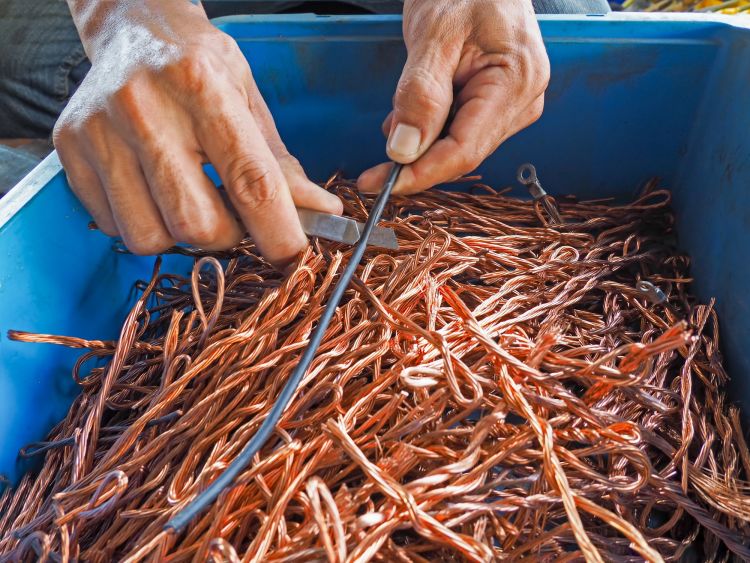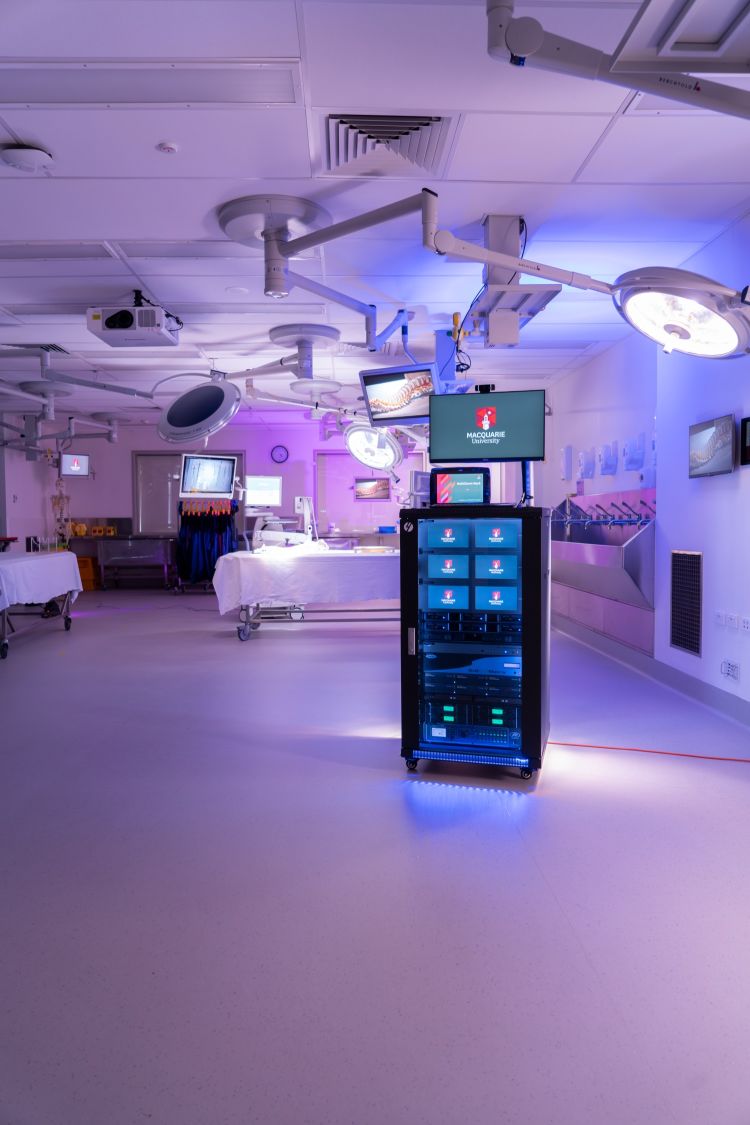Despite initiatives such as the WEEE Directive, e-waste volumes continue to soar. Tim Kridel investigates how vendors, integrators and end users are working to keep old gear out of landfills.
One of the fastest-growing technology sectors is . . . old equipment. Over the past five years, the amount of electronic waste (e-waste) grew 21% to 53.6 million metric tonnes (Mt), according to . Barely 17% was recycled in 2019.
“This means that iron, copper, gold and other high-value, recoverable materials conservatively valued at US$57 billion [€47 billion] — a sum greater than the gross domestic product of most countries — were mostly dumped or burned rather than being collected for treatment and reuse in 2019,” says the Global E-waste Statistics Partnership (GESP), the UN-backed organisation behind the report.
The GESP also expects e-waste to hit 74 Mt by 2030. That trend could prompt more e-waste regulations in addition the ones already set to take effect soon.
“Ecodesign display requirements will come into play in March 2021, as well as other regulations that will support the circular economy,” says Pamela Lothman, Christie senior manager for corporate governance and compliance.
It’s likely that regulators will also step up enforcement of existing one, such as the Waste Electrical & Electronic Equipment (WEEE) Directive.
“National governments and the European Commission must actively seek the monitoring and enforcement of proper management of WEEE and freeriding on the EEE placed on the market,” the report says.
Although the latest version of the WEEE Directive took effect in February 2014, some AV pros say awareness remains low.
“I’d say if you called 15-20 integrators here in Denmark, half of them wouldn’t know what you’re talking about,” says Anders Jørgensen, Stouenborg project manager and consultant.
“We are aware of the WEEE directive, but that’s about it,” says James Cooper, Flipside co-founder. “As a small business, we rely pretty heavily on waste management services like Biffa to correctly advise and manage the disposal of any equipment.
“It’s an expensive game. We do on occasion make trips to the local recycling centre which is both inconvenient and costs money. For these reasons we try as much as possible to get customers to take responsibility for the disposal of any broken or unsellable equipment.”
Christie is an example of how some vendors are providing a framework that makes compliance easier.
“We’ve partnered with qualified electronic recycling centres across Europe, in compliance with WEEE, so our customers can dispose of projectors in an environmentally conscious manner,” Lothman says.

But some AV pros say the industry could do more.
“If we take kit away, we’re just lumbered with it,” Cooper says. “It would be great if AVIXA or the ISCE — we’re members of both — could pick up the torch on this and try and develop some sort of guide or route for old AV gear.”
Some firms say they’re turning a profit on recycling — even with labour costs such as disassembling devices into plastic, circuit boards and so on.
“We made it into a model where we’re actually selling metal and cable,” Jørgensen says. “We’re earning money on our waste right now. We’re doing a good thing for the environment, and we’re earning a little money.”
Copper is in particularly high demand, so Stouenborg recycles every bit of chopped-off network cable.
“Last year, we probably tossed 1km of network cable in that bin,” Jørgensen says. “We get around $2-$3 per kilo. It’s $2,000-$3,000 per year.”
Free to a good home
Old gear doesn’t necessarily have to wind up at a recycling centre or a landfill. If the equipment still works, it could be donated. Some vendors already do that for brand-new gear.
“For products that are end-of-life, instead of scrapping inventory, we look for charities who can benefit,” says Hans Vereecken, Bose Professional regional sales manager. “Bose has donated many pairs of headphones to schools.”
Vendors, distributors and integrators also sometimes broker donations of installed gear that’s being replaced, or refurbish and sell the equipment themselves.
“Many distributors and integrators have a second-hand page,” Cooper says. “These lists aren’t exactly money makers, though, and eBay is always there to undermine the re-selling of any professionally checked or serviced equipment where the seller is trying to get a fair price.
“We don’t offer second-hand equipment to customers as part of installations except in very rare cases. One of the things that’s really important is manufacturer support and warranty in case there are issues with an install. Obviously selling an old, refurbished amplifier into an install could have implications on the warranty of the speakers too, even if they’re new.”
"We made it into a model where we’re actually selling metal and cable. We’re earning money on our waste right now. We’re doing a good thing for the environment, and we’re earning a little money." - Anders Jørgensen, Stouenborg
Instead, Cooper’s firm tries to find local community groups or individuals that can use the gear. But other AV pros say that’s challenging.
“I am a member of several great AV industry groups on Facebook,” says Iain Brew, clinical AV coordinator at Macquarie University in Sydney, Australia. “More often now, others are finding it almost impossible to donate or give away de-installed equipment that is still perfectly functional.
“The barrier becomes not the equipment, but the specialist and expensive knowledge to integrate and program the equipment for it to be useful. Most groups would not have this in-house or easy access.”
Even so, there are success stories. For example, Stouenborg recently renovated a big venue and loaded the decade-old PA, projectors and other gear into a shipping container.
“We sold the complete container to a theatre in South Africa,” Jørgensen says.
New lease on life
Macquarie University also is an example of how some end users are breathing new life into equipment that otherwise would be scrapped. For instance, its surgical skills lab needed to replace a digital/analogue matrix system and what Brew calls “an overly complicated and failing control system” with a fully digital Gefen video-over-IP solution.
system and what Brew calls “an overly complicated and failing control system” with a fully digital Gefen video-over-IP solution.
“Traditionally in many projects like this, an AV review project would identify new technologies and approaches, and the entire space would be entirely re-fitted from the ground up, with all existing equipment regardless of functionality e-wasted,” Brew says. “With a constrained budget, I designed a system in-house which was not only cost effective in terms of procurement but also reusing as much of the existing and functional technology as possible, such as the speakers, power amplifiers, medical displays and projector.”
Brew also identified new replacement components so that if something failed, they could easily integrate a brand-new device with the existing infrastructure.
“Two upgrades later, we are still using the original QSC power amplifiers and Extron in-ceiling speakers which are approaching 10 years old, yet are still perfectly functional, fit for purpose and easy to integrate,” Brew says.
Designed to last
Vendor support is another key factor in how long old gear can live on.
“We work to reduce e-waste fuelled by obsolescence by continuing to support products long after their warranty has passed so they don’t have to be replaced,” says Bose’s Vereecken. “How many manufacturers do this? We have a product support team in place so integrators have a solution in case a component is not repairable.”
High-quality components can also extend a product’s life. That might sound counterintuitive because it means customers wouldn’t have to buy new gear as often. But it also helps convince them to pay a premium over rival products with less durable components and designs. It can also help make the case for, say, pro-grade digital signage over TVs designed for the consumer market.
“Typical AV power supplies have an average mean time between failure (MTBF) rating of around 30,000 hours,” says Rainer Stiehl, Extron vice president of marketing for EMEA. “With our Extron Everlast power supplies, we’ve achieved MTBF benchmarks of 280,000 hours up to an incredible 1,000,000 hours, or the equivalent of over 114 years, depending on the model. Among other benefits, this extended life significantly reduces the number of power supplies dumped in landfills.”
Extron also has a power supply trade-in program.
“Like other manufacturers, we provide 12 volt, 1 amp power supplies with many products,” Stiehl says. “Often, when power supplies are shared, unused power supplies are put aside and could end up in a landfill. To avoid any unnecessary waste, we created a trade-in program, allowing customers to receive new multi-output power supplies that replace several individual power supplies for use on future projects.”
Rip and replace . . . certain parts
Some AV pros would like to see more vendors take a modular approach to product design. In the case of a projector, for example, that could mean buying a new input card to upgrade from HD to 4K, or a new light source to upgrade from 12,000 to 15,000 lumens.
“The DM matrix from Creston that they produced years and years ago, that has proven rock solid,” says Stouenborg’s Jørgensen. “You can just upgrade the input card to 4K.”
“I think it’s more important for distributors, system integrators and consultants to work together to convince all our AV manufacturers that they have to design and produce products using less raw materials and to re-use more components from older models when producing new models, for example,” says audiovisual architect Pieter Dekker. “When manufacturers remain owners of their products, instead of the end users, they will feel the responsibility to produce better and more durable products. It will automatically lead to products with a longer lifespan, less waste and less materials or components that require recycling.”
Another possibility is making long lifespans a priority when choosing products.
“When writing our requirements on the basis of which we select the best integrator, part of the requirements that have to be met is the demand that the products will have to have a lifespan of at least 10 years, for example, meaning hardware and software,” Dekker says.
Combining systems is another potential strategy — one that could be particularly attractive to clients if eliminating overlap and redundancy means their budget goes further.
“Integrating evacuation systems and sound systems (for background music and speech) leads to less distribution, amplifiers and loudspeakers,” Dekker says. “Of course, the whole chain must be certified for evacuation.”
"I designed a system in-house reusing as much of the existing and functional technology as possible, such as the speakers, power amplifiers, medical displays and projector." - Iain Brew, Macquarie University
The December Inavate explored the trend toward one-stop shops, where vendors offer a broad portfolio of products to capture more business. QSC, for example, says its “Q-SYS Ecosystem provides intuitive plug-and-play integration for classroom and remote learning, including local reinforcement, video collaboration, web conferencing, outputs for lecture capture and simplified room control.”
This trend could help minimise e-waste if a vendor’s ecosystem reduces the number of system components.
“An example is designing AV systems with distribution components from one manufacturer, like Extron,” Dekker says. “This leads to one power supply for all, instead of one power supply per component.”
Finally, some AV pros say that vendors could minimise e-waste by extending their product lifecycles.
“If we could slow down the pace of new products, I think that would have the biggest impact on minimising e-waste,” Jørgensen says. “Right now, a pro screen lifespan is 24-36 months. We’ve seen products come on the market in January at CES and going out of production in December of the same year.”
Photo credits: BsWei/Shutterstock.com and ploypemuk/Shutterstock.com